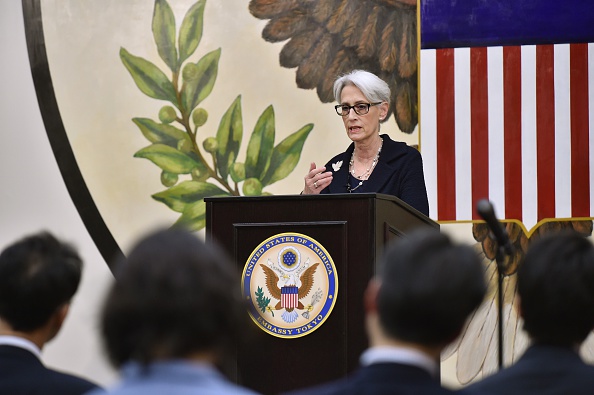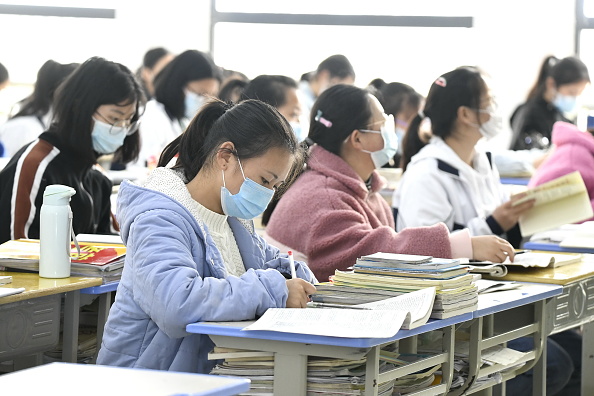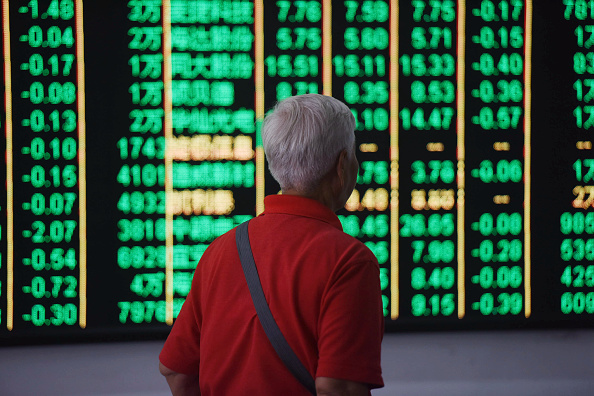
 A Diplomatic Stalemate
A Diplomatic StalemateU.S. and Chinese diplomats faced a tough exchange, as U.S. Deputy Secretary of State Wendy Sherman and her Chinese counterparts met in Tianjin for the first time. China went on the offensive, stating that the relationship "is now in a stalemate and faces serious difficulties." The U.S. side confronted China on points of dispute, but left the door open for cooperation on points of mutual interest.
Chinese Foreign Minister Xie Feng submitted a list of requests for American leadership, covering a range of international disagreements from recent years, including the extradition request for Meng Wangzhou, a loosening of sanctions, and authorizing Confucius Institutes to operate in the United States, among many other issues.
Meanwhile, across the Pacfic, the new China Ambassador to the U.S. arrived in Washington D.C. expressing hope for pandemic relief in the United States, and adopting a more toned down approach to his diplomacy. The veteran diplomat, Qin Gang, said that the China-U.S. relationship "has once again come to a new critical juncture, facing not only many difficulties and challenges but also great opportunities and potentials." He also emphasized his desire to get relations between the two countries back on track, turning the "possibility into a reality."
 Easing the Workload
Easing the WorkloadChina's education ministry released new guidance for the $120 billion private education industry, as the education sector became the latest to face government crackdowns on private business. The regulations, which are already being enforced by many local authorities across China, mandate that all companies providing core content tutoring must register as nonprofit institutions. They also banned curriculum tutoring during weekends and vacations, prohibited hiring foreigners to tutor remotely, and forbade a foreign curriculum. The move swiftly caused shares of education companies in China to plunge, and wiped away billions of dollars in the sector's market value.
Beijing described the regulations as relief for children who face intense academic pressure in China, and a lift on the financial burdens parents face. In China, the future of a student's education is dependent on gaokao - the college-entrance exam. It's not uncommon for families to spend thousands of dollars a year on private tutoring to prepare their child for these exams, leading to a competitive and expensive education race, particularly among upper-middle class families. The education ministry noted that the rules are a "comprehensive move to lower the workload and learning hours of students," as well as a way to "improve the quality of after-school services," with the ultimate goal of combatting the harmful effects of the education culture on families.
 Taking Stock
Taking StockChinese company stocks took a major hit on the U.S. exchanges, one not seen since the 2008 financial crisis. The Golden Dragon index shows technology stocks fell 15%, after China's new regulations on education and tech spooked investors. For 10 of China's largest U.S.-listed stocks, market losses valued more than $140 billion over three consecutive days this week. Among them, Alibaba took the largest fall on the New York Stock Exchange — 5% on Tuesday, and saw a market capitalization decrease from $560 to $501 billion through early Friday. Next in line, JD.com and Pinduoduo wiped out $15 and $19 billion in market value.
Across the Pacific, worries over China's junk bonds sector are rising. China Evergrande, the country's largest property developer by sales, was downgraded by Fitch Ratings and S&P Global Ratings, citing its inability to reduce debt "in an orderly manner." Economists are wondering if the company is too big to fail or, if it does fail, how catastrophic the outcomes might be.
Prepared by China-US Focus editorial teams in Hong Kong and New York, this weekly newsletter offers you snap shots of latest trends and developments emerging from China every week, while adding a dose of historical perspective.
- 2021-07-23 A Climate for Change
- 2021-07-16 The Trade Game
- 2021-07-09 Existential Threats
- 2021-07-01 Centenary Celebrations
- 2021-06-25 Critical Crossroads
- 2021-06-18 Part of the Club
- 2021-06-11 Retaliatory Legislation
- 2021-06-04 "Defanging" Diplomacy
- 2021-05-28 The End of an Era?
- 2021-05-21 One Step Forward, One Step Back
- 2021-05-14 Drifting Trade Ties
- 2021-05-07 Time to Talk
- 2021-04-30 Academic Pandemic
- 2021-04-23 Carbon Cutting
- 2021-04-16 A Hopeful Climate
- 2021-04-09 Technological Frontiers
- 2021-04-02 Back to Basics
- 2021-03-26 The Biden Era
- 2021-03-19 “A Strong Smell of Gunpowder and Drama”
- 2021-03-12 Bridging the Divide